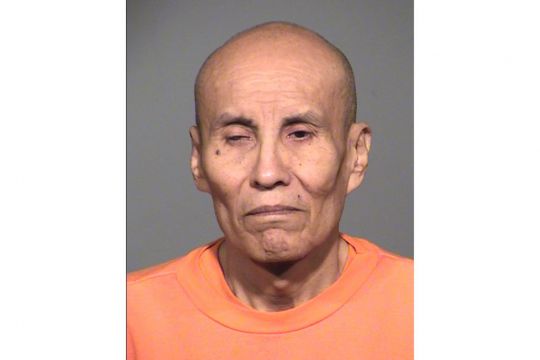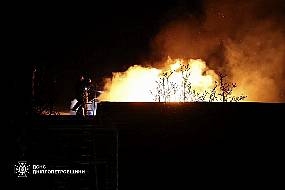An Arizona man convicted of killing a college student in 1978 has been put to death after a nearly eight-year pause in the state’s use of the death penalty brought on by an execution that critics say was botched — and the difficulty officials faced in finding lethal injection drugs.
Clarence Dixon, 66, died by lethal injection at the state prison in Florence for his murder conviction for the killing of 21-year-old Arizona State University student Deana Bowdoin, making him the sixth person to be executed in the US in 2022.
Dixon’s death was announced on Wednesday morning by Frank Strada, a deputy director with Arizona Department of Corrections, Rehabilitation and Re-entry.
The execution appeared to go smoothly, said Troy Hayden, an anchor for the Fox10 TV news programme who witnessed the process.
“Once the drugs started flowing, he went to sleep almost immediately,” Hayden said.

After the drugs were injected, Dixon’s mouth stayed open and his body did not move, Hayden and other witnesses said. The execution was declared complete about 10 minutes after he was injected.
Hayden said Dixon delivered his last words after the injection, saying: “Maybe I’ll see you on the other side, Deana. I don’t know you, and I don’t remember.”
In the final weeks of his life, Dixon’s lawyers made last-minute arguments to the courts to postpone his execution, but judges rejected his argument that he was not mentally fit to be executed and did not have a rational understanding of why the state wanted to execute him.
The US Supreme Court rejected a last-minute delay of Dixon’s execution less than an hour before it began.
Dixon had declined the option of being killed in the gas chamber — a method that has not been used in the US for more than two decades — after Arizona refurbished its gas chamber in late 2020. Instead, he was executed with an injection of pentobarbital.
Mr Strada said Dixon’s last statement was: “The Arizona Supreme Court should follow the laws. They denied my appeals and petitions to change the outcome of this trial. I do and will always proclaim innocence. Now, let’s do this (expletive).”
Leslie James, Ms Bowdoin’s older sister and a witness to the execution, told reporters after it was conducted that Ms Bowdoin had been poised to graduate from ASU and was planning a career in international marketing. Ms James described her sister as a hard worker who loved to travel, spoke multiple languages and wrote poetry.
She characterised the execution as a relief but criticised how long it took to happen: “This process was way, way, way too long.” Dixon had been on death row since his 2008 conviction.

The last time Arizona executed a prisoner was in July 2014, when Joseph Wood was given 15 doses of a two-drug combination over two hours in an execution that his lawyers said was botched.
Wood snorted repeatedly and gasped more than 600 times before he died.
States including Arizona have struggled to buy execution drugs in recent years after US and European pharmaceutical companies began blocking the use of their products in lethal injections.
Authorities have said Ms Bowdoin, who was found dead in her apartment in the Phoenix suburb of Tempe, had been raped, stabbed and strangled with a belt.
Dixon, who was an ASU student at the time and lived across the street from Bowdoin, had been charged with raping her, but that charge was later dropped on statute-of-limitation grounds. He was convicted of murder.
In arguing that Dixon was mentally unfit, his lawyers said he erroneously believed he would be executed because police at Northern Arizona University wrongfully arrested him in another case — a 1985 attack on a 21-year-old student. His lawyers conceded he was lawfully arrested by Flagstaff police.
Dixon was sentenced to life in prison in that case for sexual assault and other convictions. DNA samples taken while he was in prison later linked him to Ms Bowdoin’s killing, which had been unsolved.
Prosecutors said there was nothing about Dixon’s beliefs that prevented him from understanding the reason for the execution and pointed to court filings that he made over the years.
Defence lawyers said he was repeatedly diagnosed with paranoid schizophrenia, regularly experienced hallucinations over the past 30 years and was found “not guilty by reason of insanity” in a 1977 assault case in which the verdict was delivered by then-Maricopa County Superior Court Judge Sandra Day O’Connor, nearly four years before her appointment to the US Supreme Court.
Ms Bowdoin was killed two days after that verdict, according to court records.
Another Arizona death row prisoner, Frank Atwood, is scheduled to be executed on June 8 for the killing of eight-year-old Vicki Lynne Hoskinson in 1984. Authorities have said Atwood kidnapped the girl.
Her remains were discovered in the desert north west of Tucson nearly seven months after her disappearance. Experts could not determine the cause of death from the bones, according to court records.
Arizona has 112 prisoners on death row.







